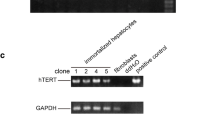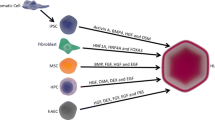Abstract
Various liver diseases result in liver failure, and liver transplantation as a definite treatment is limited by the shortage of organs available for transplantation. The use of isolated primary hepatocytes in cell-based therapies including hepatocyte transplantation, tissue engineering liver transplantation, and bioartificial liver support systems has gained increasing interest during the past years. Human hepatocytes are the preferred source of cells. Aside from the organ shortage, the isolation of human liver cells is usually limited by obtaining a sufficient quantity of high-quality, metabolically active cells. Furthermore, livers from which hepatocytes are typically harvested are not suitable for transplantation, with the variability in quantity and quality. Porcine hepatocytes, on the other hand, have the ability to perform complex biological functions and show modifiable behavior. Primary porcine hepatocytes are currently widely used in the investigation of drug metabolism, hepatotoxicity, protein biosynthesis, and gene expression. Primary hepatocytes do not proliferate in vitro and are sensitive to freeze-thaw damage in cryopreservation and thus need to be freshly isolated for each experiment. Consequently, the methods of porcine hepatocyte isolation are being actively sought after. Our laboratories have been involved in various applications of liver cells, and we have long-lasting experiences in liver cell isolation and their application in R&D. We here summarize the present protocol of our laboratories for primary hepatocyte isolation from pig and their liver tissue engineering for xenotransplantation.
Access this chapter
Tax calculation will be finalised at checkout
Purchases are for personal use only
Similar content being viewed by others
References
Berry MN, Friend DS (1969) High-yield preparation of isolated rat liver parenchymal cells: a biochemical and fine structural study. J Cell Biol 43(43):506–520
Jiang QD, Li HP, Liu FJ et al (2013) Isolation and identification of bovine primary hepatocytes. Genet Mol Res 12(4):5186–5194. https://doi.org/10.4238/2013.October.30.3
Shulman M, Nahmias Y (2013) Long-term culture and coculture of primary rat and human hepatocytes. Methods Mol Biol 945:287–302. https://doi.org/10.1007/978-1-62703-125-7_17
Naik S, Trenkler D, Santangini H, Pan J, Jauregui HO (1996) Isolation and culture of porcine hepatocytes for artificial liver support. Cell Transplant 5(1):107–115
Li Y, Wang Y, Wu Q, Li L, Shi Y, Bu H, Bao J (2016) Comparison of methods for isolating primary hepatocytes from mini pigs. Xenotransplantation 23(5):414–420. https://doi.org/10.1111/xen.12259
Nelson LJ, Newsome PN, Howie AF et al (2000) An improved ex vivo method of primary porcine hepatocyte isolation for use in bioartificial liver systems. Eur J Gastroenterol Hepatol 12(8):923
Maruyama M, Totsugawa T, Kunieda T et al (2003) Hepatocyte isolation and transplantation in the pig. Cell Transplant 12(6):593–598
Mitaka T (1998) The current status of primary hepatocyte culture. Int J Exp Pathol 79(6):393–409
Rush GF, Gorski JR, Ripple MG, Sowinski J, Bugelski P, Hewitt WR (1985) Organic hydroperoxide-induced lipid peroxidation and cell death in isolated hepatocytes. Toxicol Appl Pharmacol 78(3):473–483
Boess F, Kamber M, Romer S et al (2003) Gene expression in two hepatic cell lines, cultured primary hepatocytes, and liver slices compared to the in vivo liver gene expression in rats: possible implications for toxicogenomics use of in vitro systems. Toxicol Sci 73(2):386–402
Hickey RD, Lillegard JB, Fisher JE et al (2011) Efficient production of Fah-null heterozygote pigs by chimeric adeno-associated virus-mediated gene knockout and somatic cell nuclear transfer. Hepatology 54(4):1351–1359. https://doi.org/10.1002/hep.24490
Hickey RD, Mao SA, Glorioso J et al (2014) Fumarylacetoacetate hydrolase deficient pigs are a novel large animal model of metabolic liver disease. Stem Cell Res 13(1):144–153. https://doi.org/10.1016/j.scr.2014.05.003
Lloyd TD, Orr S, Patel R et al (2004) Effect of patient, operative and isolation factors on subsequent yield and viability of human hepatocytes for research use. Cell Tissue Banking 5(2):81–87
Bao J, Fisher JE, Lillegard JB et al (2013) Serum-free medium and mesenchymal stromal cells enhance functionality and stabilize integrity of rat hepatocyte spheroids. Cell Transplant 22(2):299–308. https://doi.org/10.3727/096368912X656054
Alexandre E, Cahn M, Abadieviollon C et al (2002) Influence of pre-, intra- and post-operative parameters of donor liver on the outcome of isolated human hepatocytes. Cell Tissue Banking 3(4):223–233
Puviani AC, Ottolenghi C, Tassinari B, Pazzi P, Morsiani E (1998) An update on high-yield hepatocyte isolation methods and on the potential clinical use of isolated liver cells [Review]. Comp Biochem Physiol A Mol Integr Physiol 121(2):99–109
Bartlett DC, Hodson J, Bhogal RH, Youster J, Newsome PN (2014) Combined use of N -acetylcysteine and Liberase improves the viability and metabolic function of human hepatocytes isolated from human liver. Cytotherapy 16(6):800–809
Solanas E, Sostres C, Serrablo A et al (2015) Effect of dimethyl sulfoxide and melatonin on the isolation of human primary hepatocytes. Cells Tissues Organs 200(5):2–13
Sellaro TL, Ranade A, Faulk DM et al (2010) Maintenance of human hepatocyte function in vitro by liver-derived extracellular matrix gels. Tissue Eng A 16(3):1075
Sérandour AL, Loyer P, Garnier D et al (2005) TNFalpha-mediated extracellular matrix remodeling is required for multiple division cycles in rat hepatocytes. Hepatology 41(3):478–486
Hammond JS, Gilbert TW, Howard D et al (2011) Scaffolds containing growth factors and extracellular matrix induce hepatocyte proliferation and cell migration in normal and regenerating rat liver. J Hepatol 54(2):279–287
Fernández M, Semela D, Bruix J, Colle I, Pinzani M, Bosch J (2009) Angiogenesis in liver disease. J Hepatol 50(3):604–620
Lin P, Chan WC, Badylak SF, Bhatia SN (2004) Assessing porcine liver-derived biomatrix for hepatic tissue engineering. Tissue Eng 10(8):1046–1053
Crapo PM, Gilbert TW, Badylak SF (2011) An overview of tissue and whole organ decellularization processes. Biomaterials 32(12):3233–3243
Yagi H, Fukumitsu K, Fukuda K et al (2013) Human-scale whole-organ bioengineering for liver transplantation: a regenerative medicine approach. Cell Transplant 22(2):231–242
Maghsoudlou P, Georgiades F, Smith H et al (2016) Optimization of liver decellularization maintains extracellular matrix micro-architecture and composition predisposing to effective cell seeding. PLoS One 11(5):e0155324
Wang Y, Bao J, Wu Q et al (2015) Method for perfusion decellularization of porcine whole liver and kidney for use as a scaffold for clinical-scale bioengineering engrafts. Xenotransplantation 22(1):48–61. https://doi.org/10.1111/xen.12141
Noishiki Y, Miyata T (2010) A simple method to heparinize biological materials. J Biomed Mater Res A 20(3):337–346
Murugesan S, Xie J, Linhardt RJ (2008) Immobilization of heparin: approaches and applications. Curr Top Med Chem 8(2):80–100
Bao J, Shi Y, Sun H et al (2011) Construction of a portal implantable functional tissue-engineered liver using perfusion-decellularized matrix and hepatocytes in rats. Cell Transplant 20(5):753–766. https://doi.org/10.3727/096368910X536572
Bruinsma BG, Kim Y, Berendsen TA, Ozer S, Yarmush ML, Uygun BE (2015) Layer-by-layer heparinization of decellularized liver matrices to reduce thrombogenicity of tissue engineered grafts. J Clin Transl Res 1(1):48–56
Bao J, Wu Q, Sun J et al (2015) Hemocompatibility improvement of perfusion-decellularized clinical-scale liver scaffold through heparin immobilization. Sci Rep 5:10756. https://doi.org/10.1038/srep10756
Wang Y, Bao J, Wu X et al (2016) Genipin crosslinking reduced the immunogenicity of xenogeneic decellularized porcine whole-liver matrices through regulation of immune cell proliferation and polarization. Sci Rep 6:24779. https://doi.org/10.1038/srep24779
Badylak SF, Valentin JE, Ravindra AK, Mccabe GP, Stewartakers AM (2008) Macrophage phenotype as a determinant of biologic scaffold remodeling. Tissue Eng A 14(11):1835
Loh QL, Choong C (2013) Three-dimensional scaffolds for tissue engineering applications: role of porosity and pore size. Tissue Eng B Rev 19(6):485–502
Martino MM, Briquez PS, Güç E et al (2014) Growth factors engineered for super-affinity to the extracellular matrix enhance tissue healing. Science 343(6173):885–888
Mazza G, Rombouts K, Hall AR et al (2015) Decellularized human liver as a natural 3D-scaffold for liver bioengineering and transplantation. Sci Rep 5:13079
Sotogutierrez A, Zhang L, Medberry C et al (2011) A whole-organ regenerative medicine approach for liver replacement. Tissue Eng Part C Methods 17(6):677–686
Lin YQ, Wang LR, Wang JT et al (2015) New advances in liver decellularization and recellularization: innovative and critical technologies. Expert Rev Gastroenterol Hepatol 9(9):1–9
Author information
Authors and Affiliations
Corresponding author
Editor information
Editors and Affiliations
Rights and permissions
Copyright information
© 2020 Springer Science+Business Media, LLC, part of Springer Nature
About this protocol
Cite this protocol
Li, Y., Wu, Q., Wang, Y., Bu, H., Bao, J. (2020). Porcine Hepatocytes: Isolation and Liver Tissue Engineering for Xenotransplantation. In: Costa, C. (eds) Xenotransplantation. Methods in Molecular Biology, vol 2110. Humana, New York, NY. https://doi.org/10.1007/978-1-0716-0255-3_18
Download citation
DOI: https://doi.org/10.1007/978-1-0716-0255-3_18
Published:
Publisher Name: Humana, New York, NY
Print ISBN: 978-1-0716-0254-6
Online ISBN: 978-1-0716-0255-3
eBook Packages: Springer Protocols




